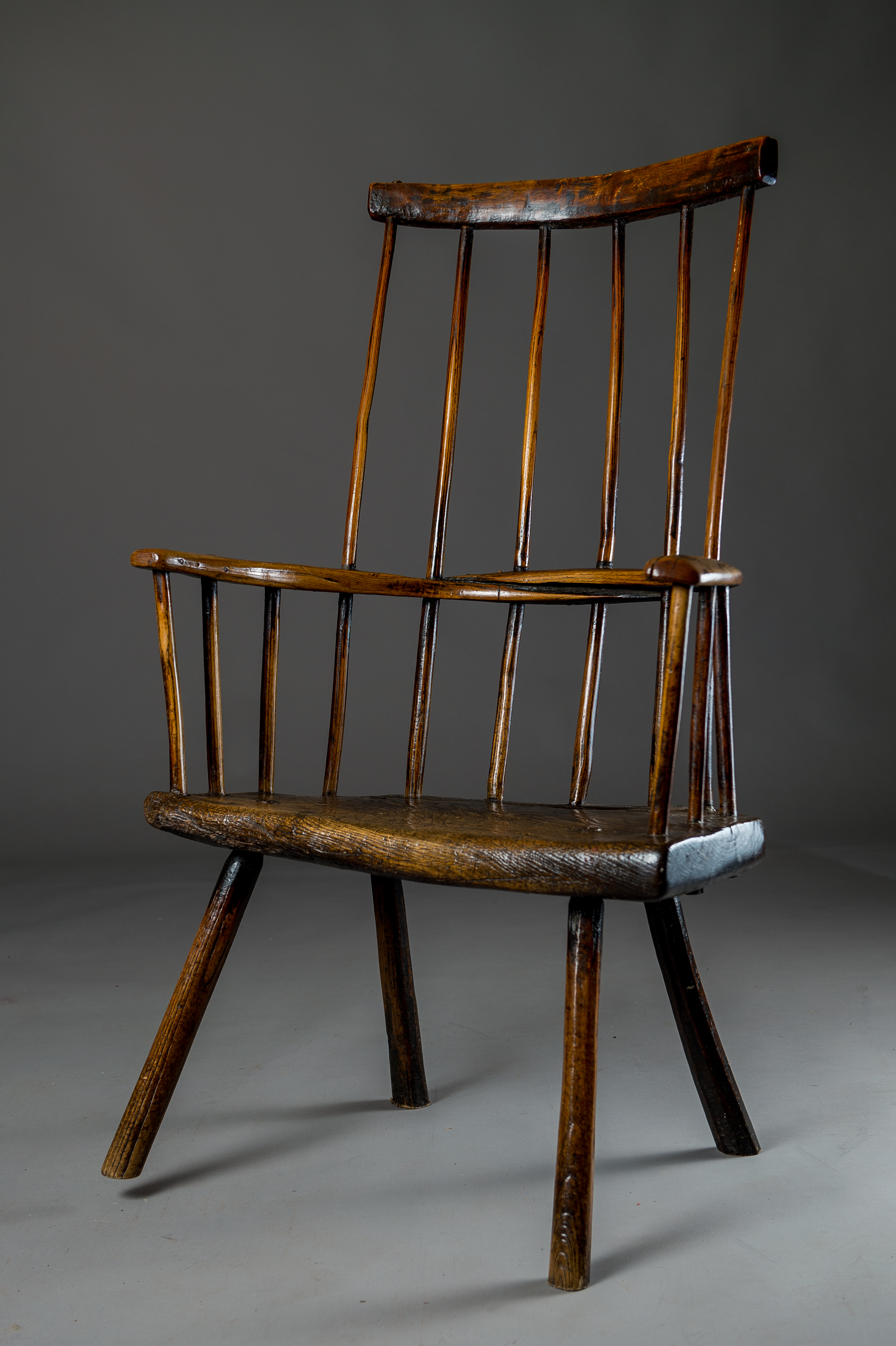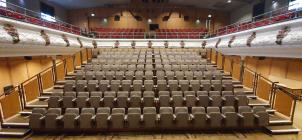Content can be downloaded for non-commercial purposes, such as for personal use or in educational resources.
For commercial purposes please contact the copyright holder directly.
Read more about the The Creative Archive Licence.
Description
The Welsh stick chair is often categorised as being of primitive construction and design and at first glance this chair would seem to fit into that group. However, when studied closely, it is evident that its maker had the confidence, knowledge and understanding of how to get the best from the timber, working with its natural shape.
Everything about this chair indicates that it was made at speed and with the assurance of a maker of long experience. The two part arm has been made from a single piece of naturally curved ash, which has been split and held together with the use of wooden pegs or tree nails. The maker would appear to have given little consideration to decoration and appearance, even leaving the bark on the arm. The method used in the making of this arm is similar to the ancient practice seen in cruck roof trusses found in vernacular cottages and farmhouses.
The six sided seat is similar in shape to those seen in many three legged stools found across West Wales in that there is no attempt to round the edges or give comfort to the sitter. The comb sticks as they pass through the arms, have been tightened with the use of small wedges. One of the legs appears to hover in the air. This is probably due to it having sat on an uneven floor for many years and interestingly this leg also appears to be at a slightly different position. Although this leg is original, it perhaps indicates that its difference was caused either by its past environment, or that it might have come loose over time and been put back and tightened at a different angle. This chair, despite the fact that it rocks when sat on – could there have been a handy wedge nearby to place under the leg, perhaps a folded beer-mat, it was never valued enough to have been ‘restored’ , which makes it all the more interesting in our opinion. It is difficult to place this chair to a specific county or area, everything about it, including where we bought it which was at an auction in Carmarthenshire would indicate a West Wales provenance.






Do you have information to add to this item? Please leave a comment
Comments (0)
You must be logged in to leave a comment